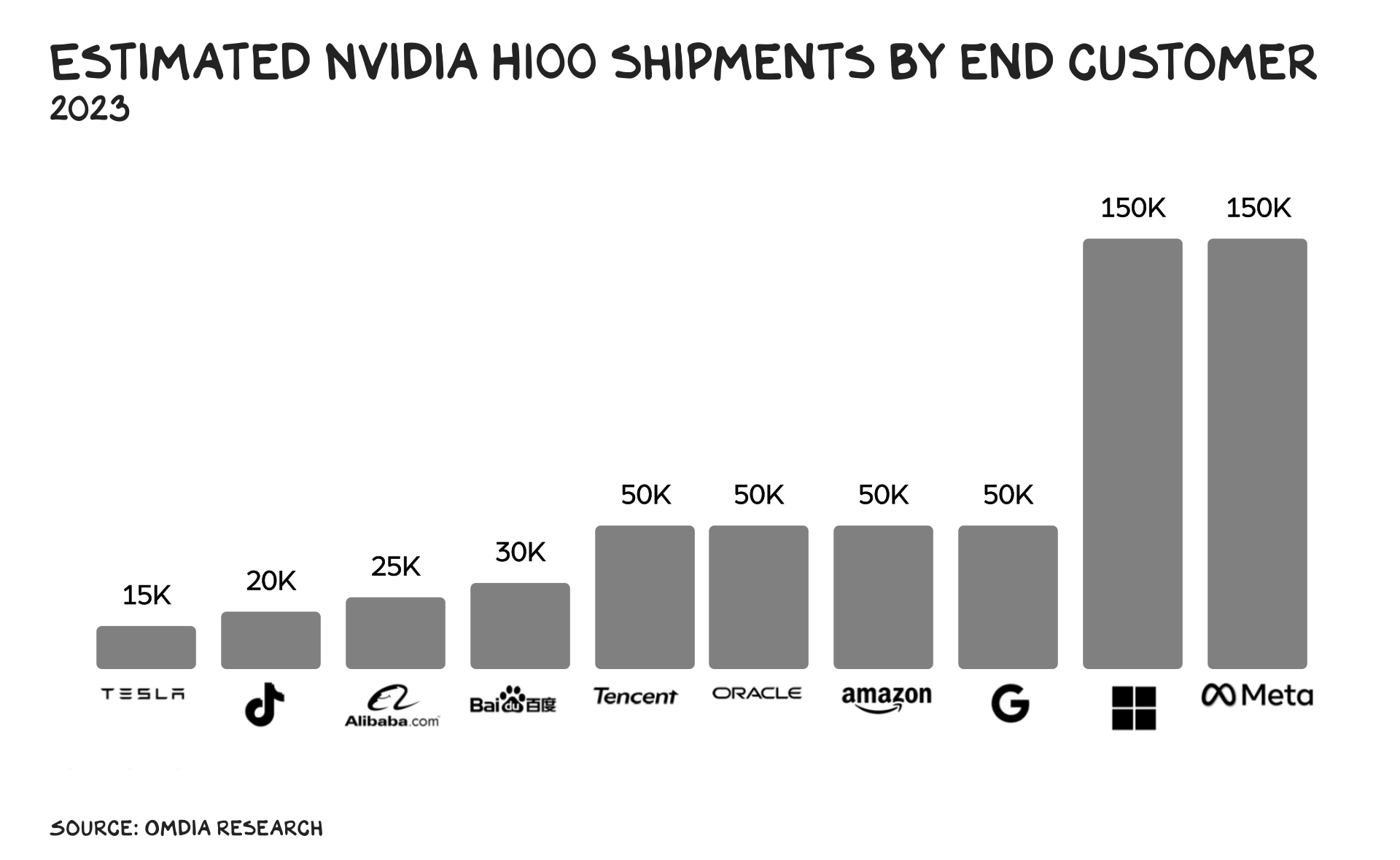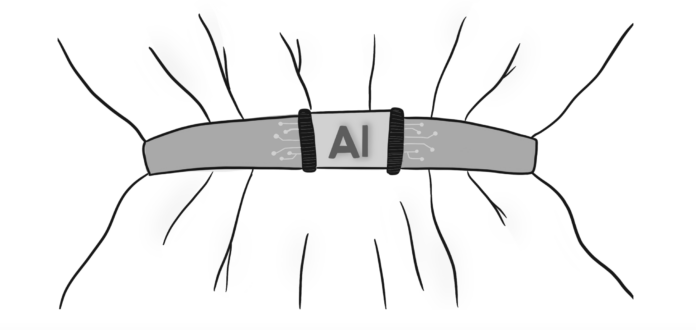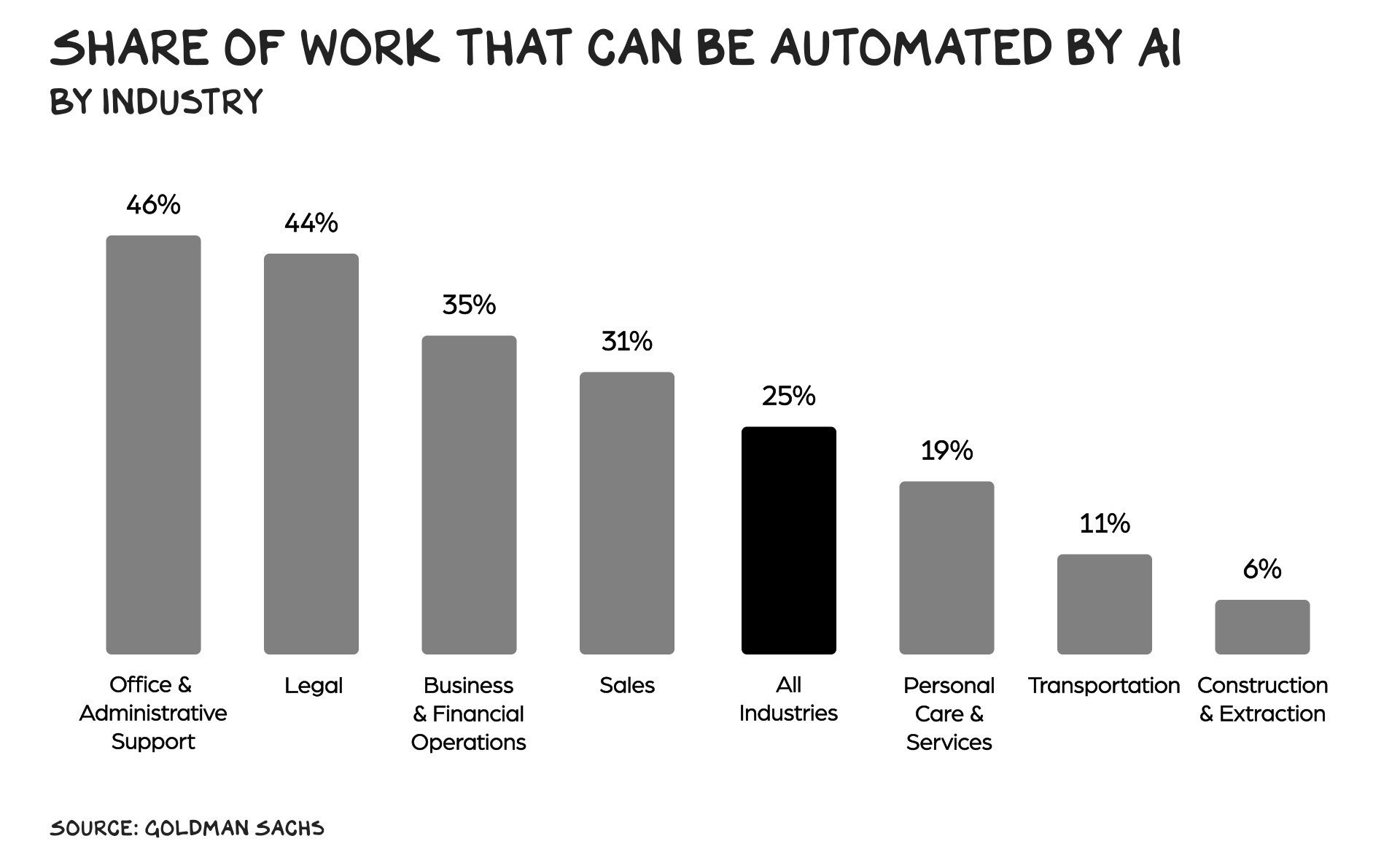If you want to understand how AI is reshaping business, picture it as the other massive innovation of our time: GLP-1 drugs. Both shed weight by suppressing cravings; both exacerbate existing inequities (aka the rich get richer) before generating wider prosperity; and both are having a greater impact than projected as early adopters are hesitant to admit they’re using.
Secret Sauce
Nobody I know is on Ozempic. Yet, nearly everyone I know is on Ozempic. Either that, or gluten-free diets are suddenly delivering exponential results previously unheard of. People are hesitant to acknowledge they need a drug to lose those last 15 pounds — which doesn’t fit with our narrative that success is correlated to self-control. One of the most interesting, and discouraging, features of GLP-1 use is that the region with the greatest per-capita prescriptions is also (wait for it) the thinnest. This makes no sense … but it does. The Upper East Side of Manhattan is replete with people who can spend $1,000 a month to go from slim to skinny. In sum, GLP-1 drugs are not (yet) getting to the communities who really need them. I believe this will eventually happen, however, because the public health and economic benefits are just that staggering.
Corporate Ozempic
Similarly, my thesis is that firms (notably tech companies) have also discovered a weight loss drug and are also being coy about it. Recent financial news features two stories: layoffs and record profits. These are related. There’s no mystery to the surface narrative. A company lays off 5%, 10%, or even 25% of its workforce and, 6 to 12 months later, after severance pay and expenses are flushed through the P/L, its operating margin hits new heights. The ultimate peanut-butter-and-chocolate shareholder confection is Meta, which produced a singular Hall of Fame quarter in Q4.

All told, tech companies fired 165,000 people in 2022 and 260,000 in 2023, and they’re on pace for 270,000 in 2024. The media narrative is that these firms are shedding the excess weight they put on during the pandemic. The collision of remote work, stimulus, and social isolation triggered a historic revenue acceleration and a reflexive hiring binge in tech. And we’re now seeing the course correction. This phenomena is undeniable: Between 2019 and 2022, Amazon doubled its headcount — it tripled its corporate headcount in five years. Amazon’s pandemic hiring may be the greatest non-war scaling up of a private employee base in history. But every major tech player bulked up. Even prudent Apple grew its ranks 20%.
Overdone pandemic hiring was a reasonable explanation for the tech layoffs in late 2022. But 18 months later, there’s been sufficient time to reduce headcount. There’s no incentive for a company to slow-roll this process — a drip feed of layoffs drains company morale. There is something else going on.
Business results also don’t explain the deeper cuts. These companies are killing it. Meta’s revenue was up 16% in 2023; Alphabet’s, 9%. Microsoft’s most recent quarter registered 72% greater revenue than the like quarter in 2020, which (until then) was its highest-grossing quarter to date. Accordingly, Big Tech’s stock prices are at all-time highs, and the magnificent seven were responsible for 70% of the S&P’s Macho Libre year (up 24%). Based on the numbers, the pandemic hiring binge wasn’t a mistake, but the correct response to a step-change in business. They needed these people … until they didn’t. The layoffs are no longer a signal of economic conditions, but innovation.
It’s not just tech. While the broader economy is enjoying steady job growth and low unemployment (the longest period of sub-4% unemployment in 50 years), many firms have let large numbers of employees go — UPS, CVS, and Hasbro are among the companies that have announced layoffs of 1,000+ people in the past six months.
What’s really going on? I believe AI is playing a larger role in layoffs than CEOs are willing to admit. There have been hints: IBM’s chief said the company plans to pause hiring for positions that could be replaced by AI, and UPS acknowledged that AI factored into its recent layoffs. But as a general rule, expect a CEO to be reluctant to state on an earnings call that the fastest-growing technology in history is already giving her “the ability to lay off people without any impact on the top-line.”
That creates a messaging maze no Investor Relations or Corporate Comms group has faced before. Shortly after UPS’s CEO mentioned AI in the context of layoffs, a spokesperson clarified that “AI is not replacing workers.” A similar post-earnings call two-step occurred at IBM. It’s rare that growth and the size of your employee base are inversely correlated. And it doesn’t make for a good all-hands narrative: “We’ve had a record quarter, and we’re going to need fewer of you.”
It’s the denials that first raised my antennae: “We’re not restructuring because AI is taking away roles,” Alphabet’s Chief Business Officer Philipp Schindler told analysts on the company’s most recent earnings call. That’s the “I gave up gluten” of tech.
Craving Suppression
Ozempic and other GLP-1 drugs work by suppressing the brain chemistry that rewards us for eating. It doesn’t make us thinner directly, but reduces our cravings for food. Because the same neurochemicals drive other cravings, GLP-1 drugs hold tremendous promise for addressing many of the societal ills that flow from our superabundance. AI can have a similar effect on corporate cravings. And if consumers are willing to pay $1,000 a month to lose weight without cravings, what would a corporation pay to achieve the previously unthinkable: reducing costs while growing revenue?
As I write this, Nvidia is valued at nearly $2 trillion, up 16% after reporting its earnings on February 21. Put another way, in the 60 minutes following its earnings release, Nvidia added the value of Ford, Ferrari, and GM to its market cap. Maybe even more impressive, the company has added the value of Tesla in the past six weeks. Nvidia GPUs are legal performance enhancing drugs for corporations. Add “1980s East German Olympian” to one of the monikers assigned to Meta, as it’s tied with Microsoft for largest corporate buyer of these PEDs (Nvidia GPUs).

We Are Everything
There is a piece of every star in all of us — we are the universe, and the fundamental imperative of the universe is to expand. The rookie move I keep making as an operator is overhiring. And most CEOs I’ve known make the same mistake. It’s the siren call of the cosmos … just grow. And new employees provide the illusion that you are expanding. You can see them in the halls of HQ. They build out individual fiefdoms of senior managers and produce more products, features, sales calls, and revenue. More of everything feels like … growth.
The hard part is to build a business whose output is greater than the inputs. But as long as the output is visible and increasing, you feel you are playing your role making the universe a better place. Now, as a board director, I’m usually the person pushing back on ambitious (i.e., bat-shit crazy) hiring plans, and I’m the first to suggest cutting costs. That may be why many/most of my startups survived, but I was also never able to build a $1 billion company. To be clear, there’s definitely opportunities for outsized value creation (sometimes) in the pursuit of crazy growth. It produced a new generation of businesses (AMZN, NFLX, etc.). But, as I tell CEOs: Assume you are not Amazon.
AI by Another Name
The media portrays the impact of AI as a one-for-one proposition — Mary the copywriter losing her job to ChatGPT. But that’s not how AI is trimming corporate America. Instead, it’s picking off individual tasks and augmenting teams with more capabilities. Goldman Sachs estimates that AI could perform about one-fourth of the work done by humans today, but that two-thirds of jobs are exposed to some degree of AI automation. That automation is taking many different forms. UPS is using AI to determine pricing for contract proposals. Allstate’s AI is developing internal training programs, doing in a day what once took three weeks.
Jobs are being lost, but augmentation will be the broader story. Rather than copywriter Mary losing her job, Mary’s firm will train her on an AI tool that generates first drafts, takes approved product copy and converts it for catalog, web, and social use, and streamlines other tasks. Accordingly, Mary’s manager will expect her to generate three times the copy in the same time.
Managers can take on new initiatives and domains without the headache of hiring more humans. It’s growth without calories. I’ve founded two strategy firms (Prophet and L2) and loved everything about them, except for the clients and the employees — every additional hire creates complexity and thus increases risk. The AI revolution will inspire a golden age of startups with lower infant mortality, as there will be fewer people (i.e., less risk) required to get to sustainability.
Coy
CEOs are being coy about this, at least in public, because there’s a sense of fear surrounding the brave new world of AI. The illusionist’s trick in the Valley right now is getting the media to look over there (trimming fat) while they’re stuffing the rabbit into the hat here (replacing it with AI). In the next several quarters, however, I believe CEOs will come out in earnings calls and put it bluntly: “We’re going to be a smaller company that does more business thanks to AI.” Pundits will clutch their pearls for a hot minute until the stock explodes, and the secret hiding in plain sight will be visible to everyone. It’s corporate Ozempic. It’s not about less bread, but less craving for bread. Read: hiring people.
This will, correctly, raise concerns about a dystopia where nobody can find work. But AI will ultimately create jobs, as there will be new windows of attack against corporate titans. AI is currently a hormone therapy for mature companies looking to feel young again. Soon enough, though, a new generation of firms raised on the mother’s milk of AI will create an army of supersoldiers ready to attack bigger armies who are still fighting on horseback. I’m here for it.
Life is so rich,
![]()
P.S. Did you know you can listen to No Mercy / No Malice read by George Hahn? Subscribe here.
P.P.S. I’m teaching an Algebra of Wealth course for Section on May 13. Sign up now to get a simple formula for building long-term wealth, directly from me.




